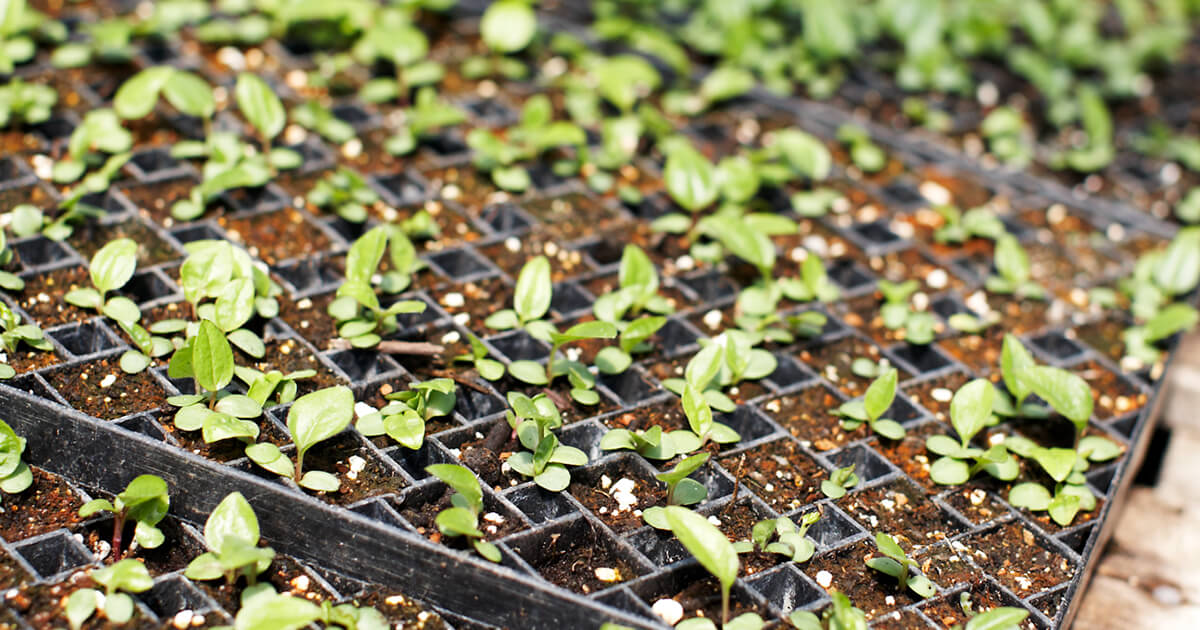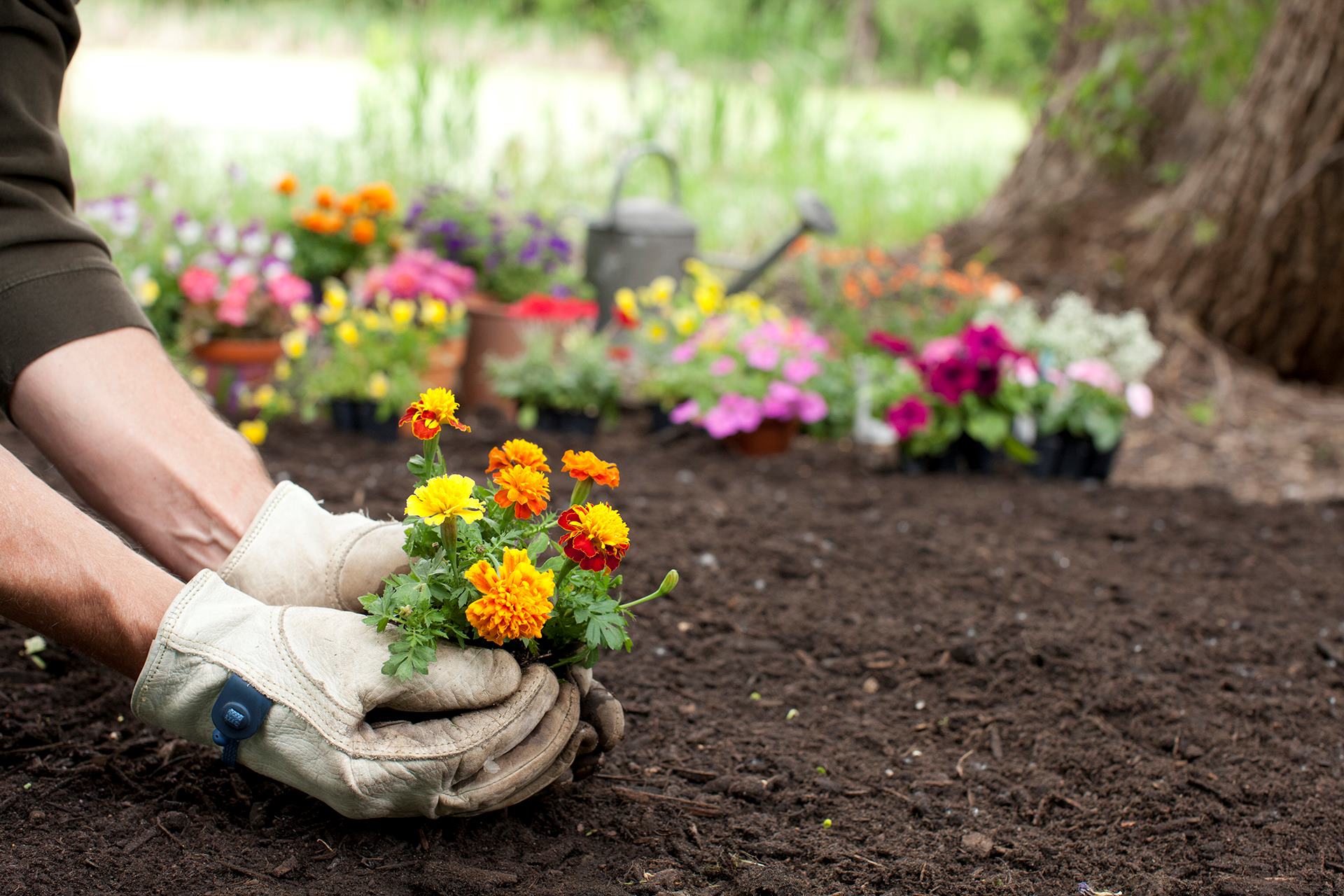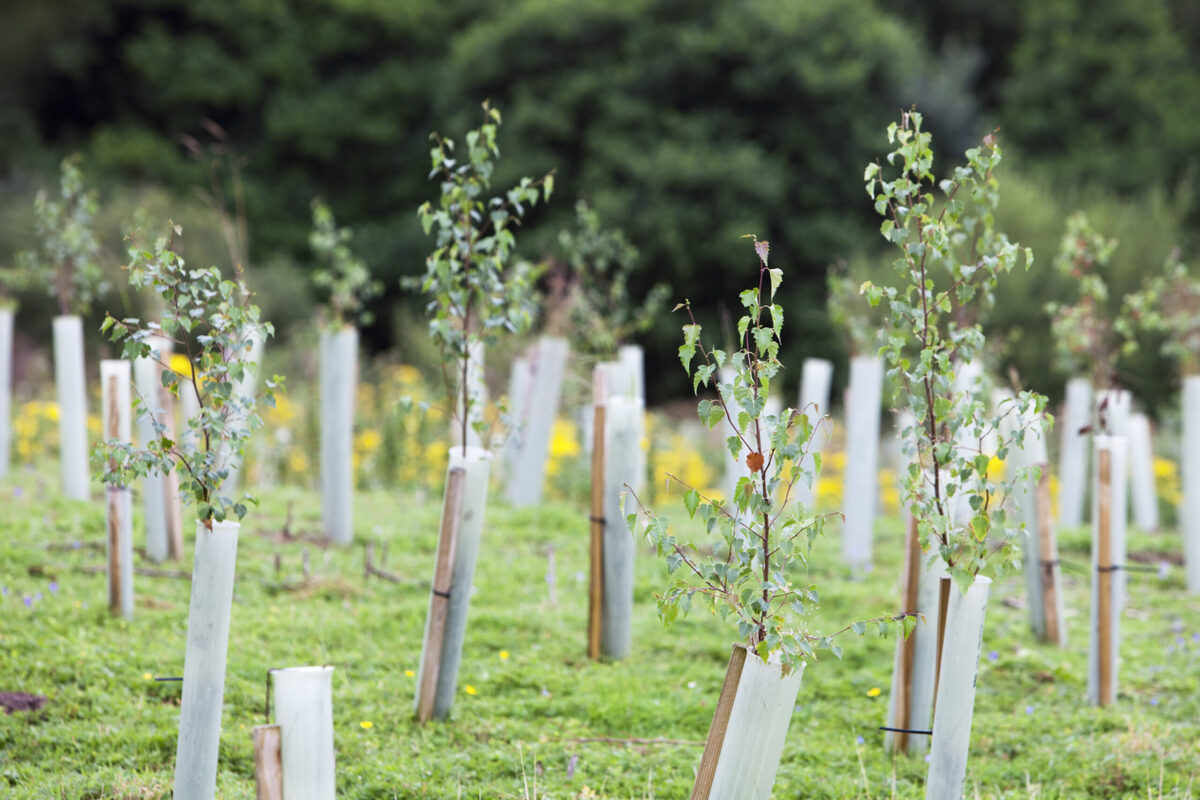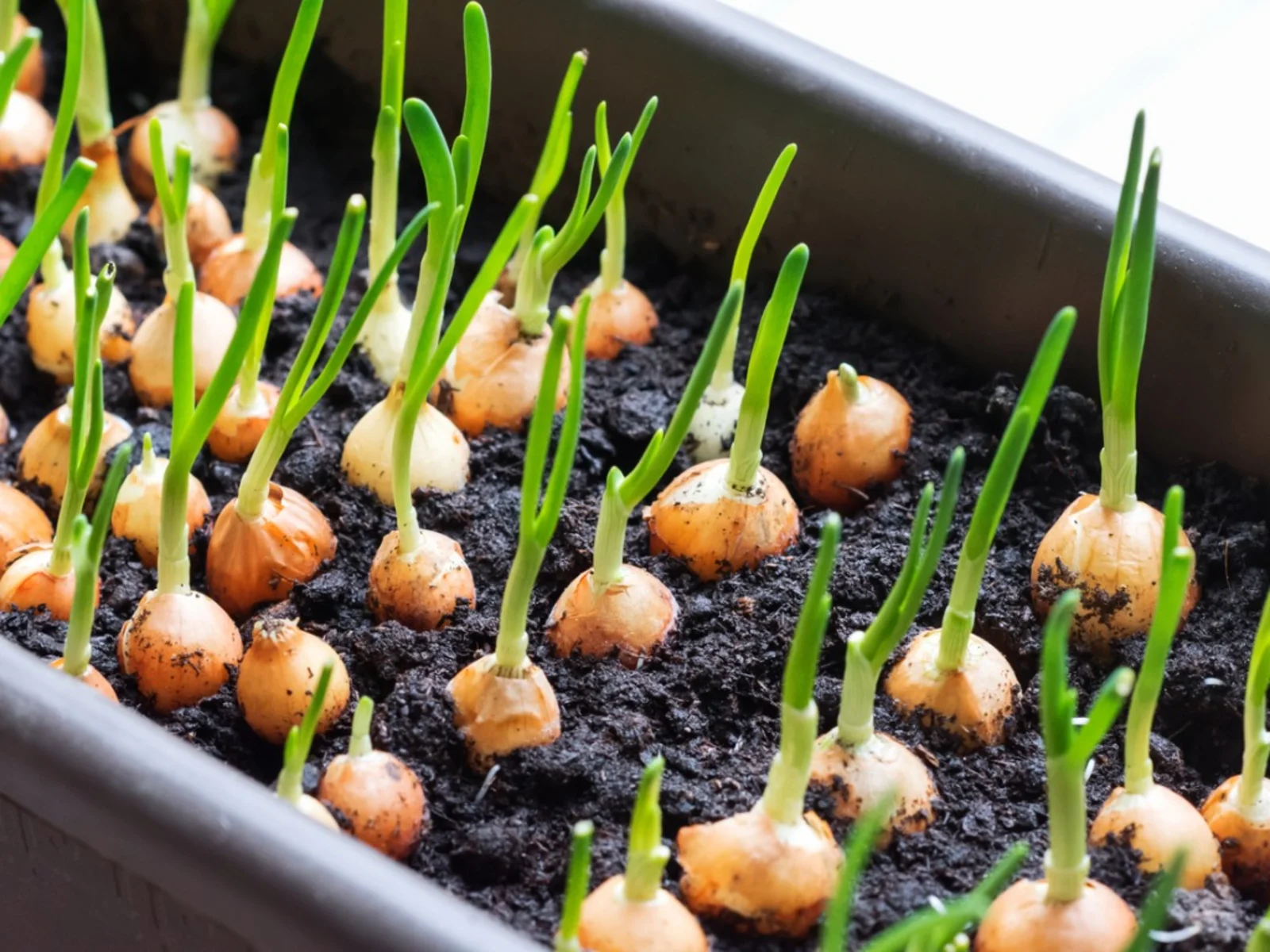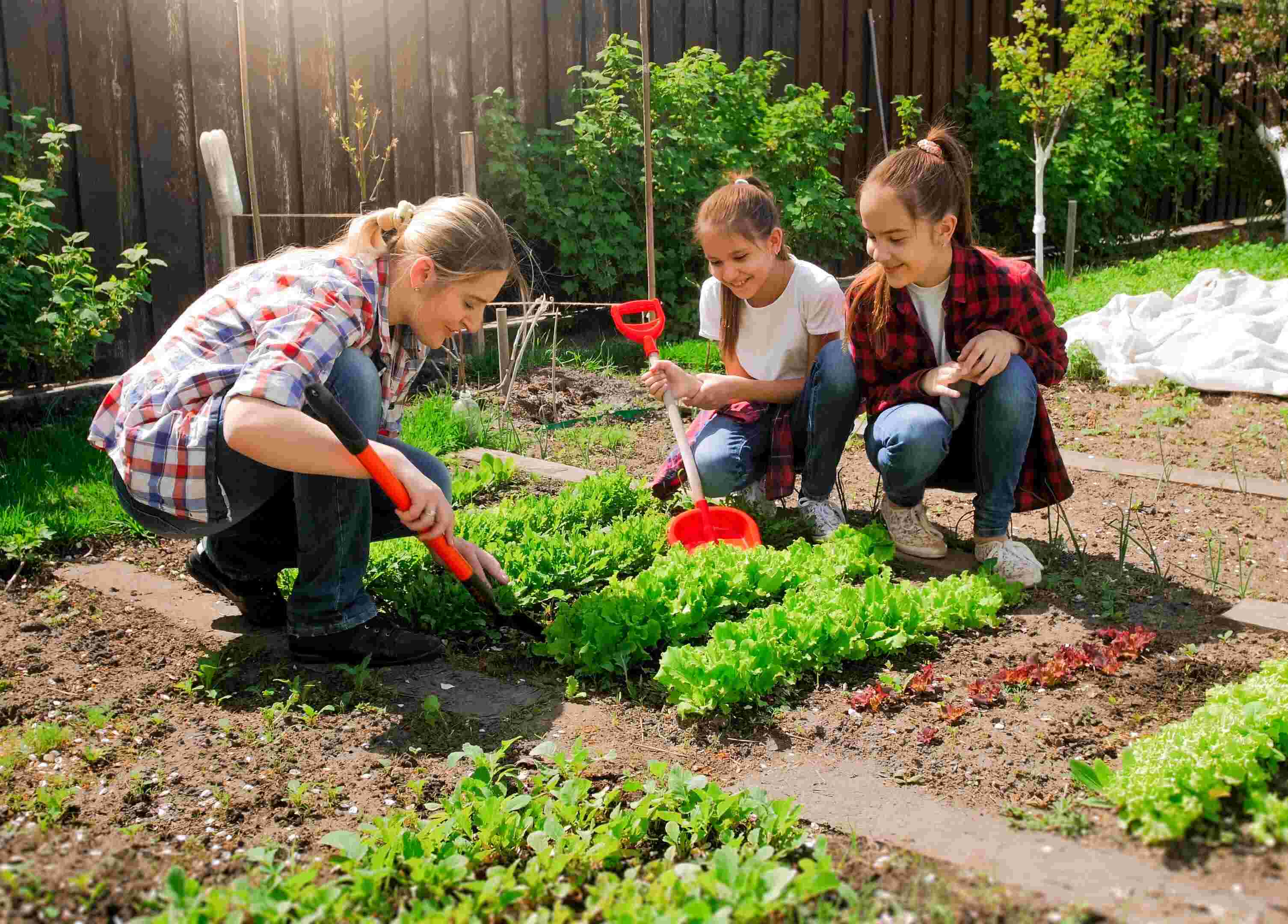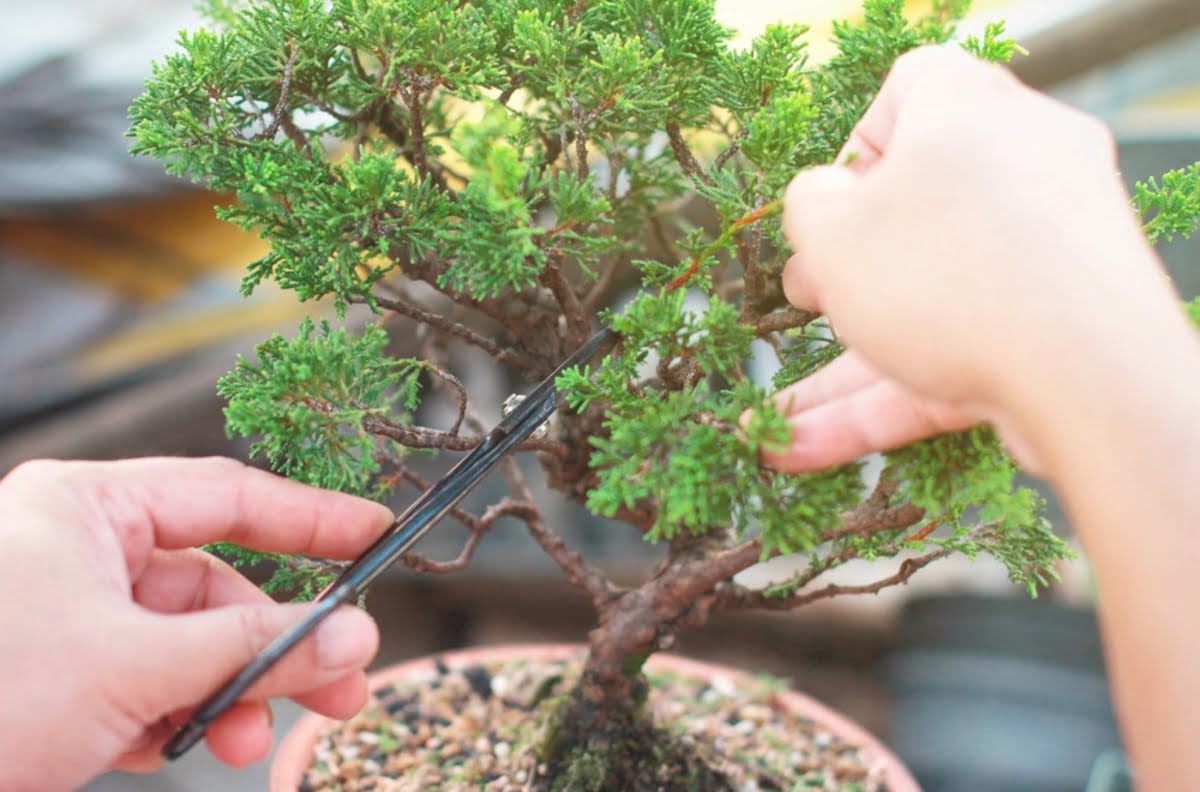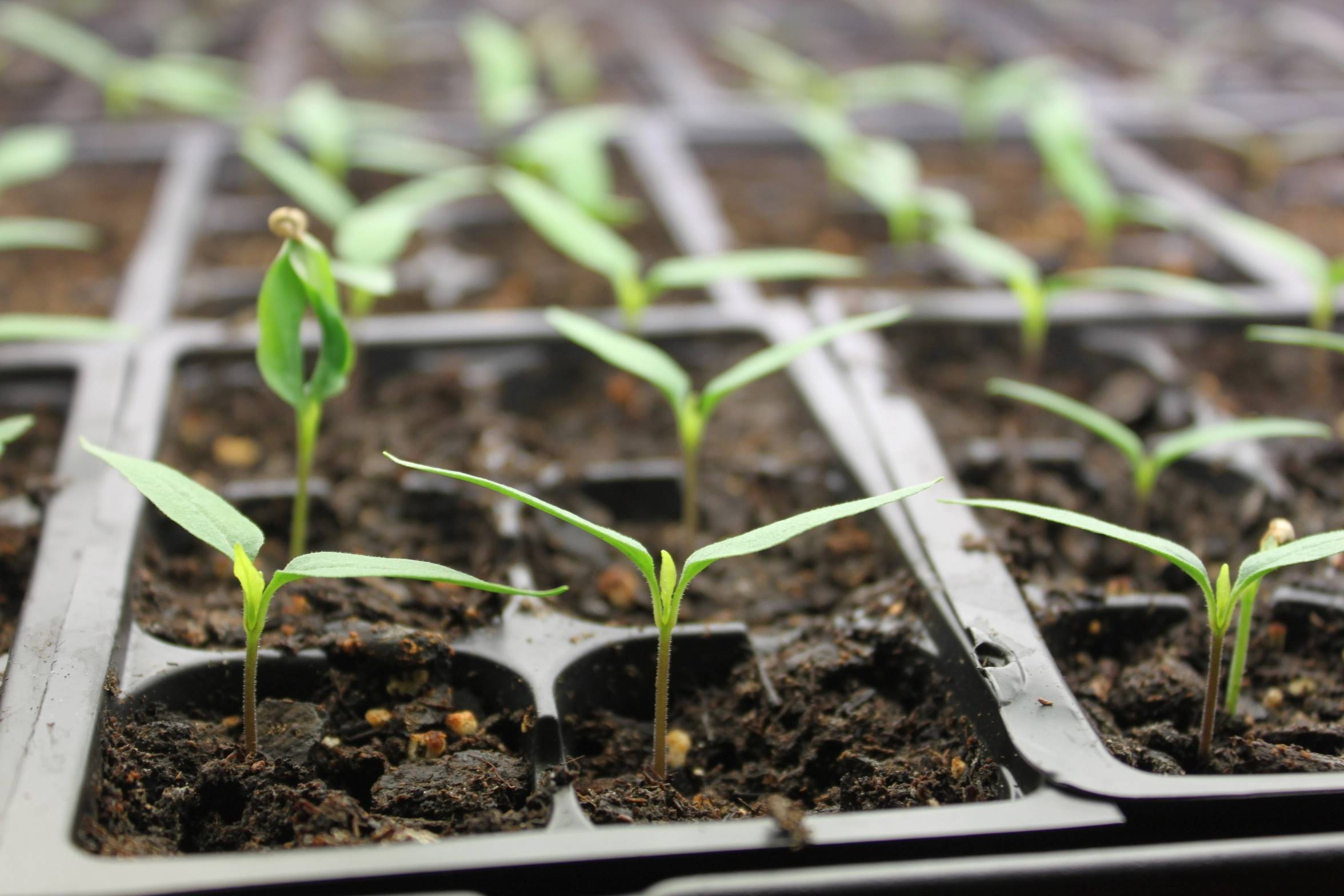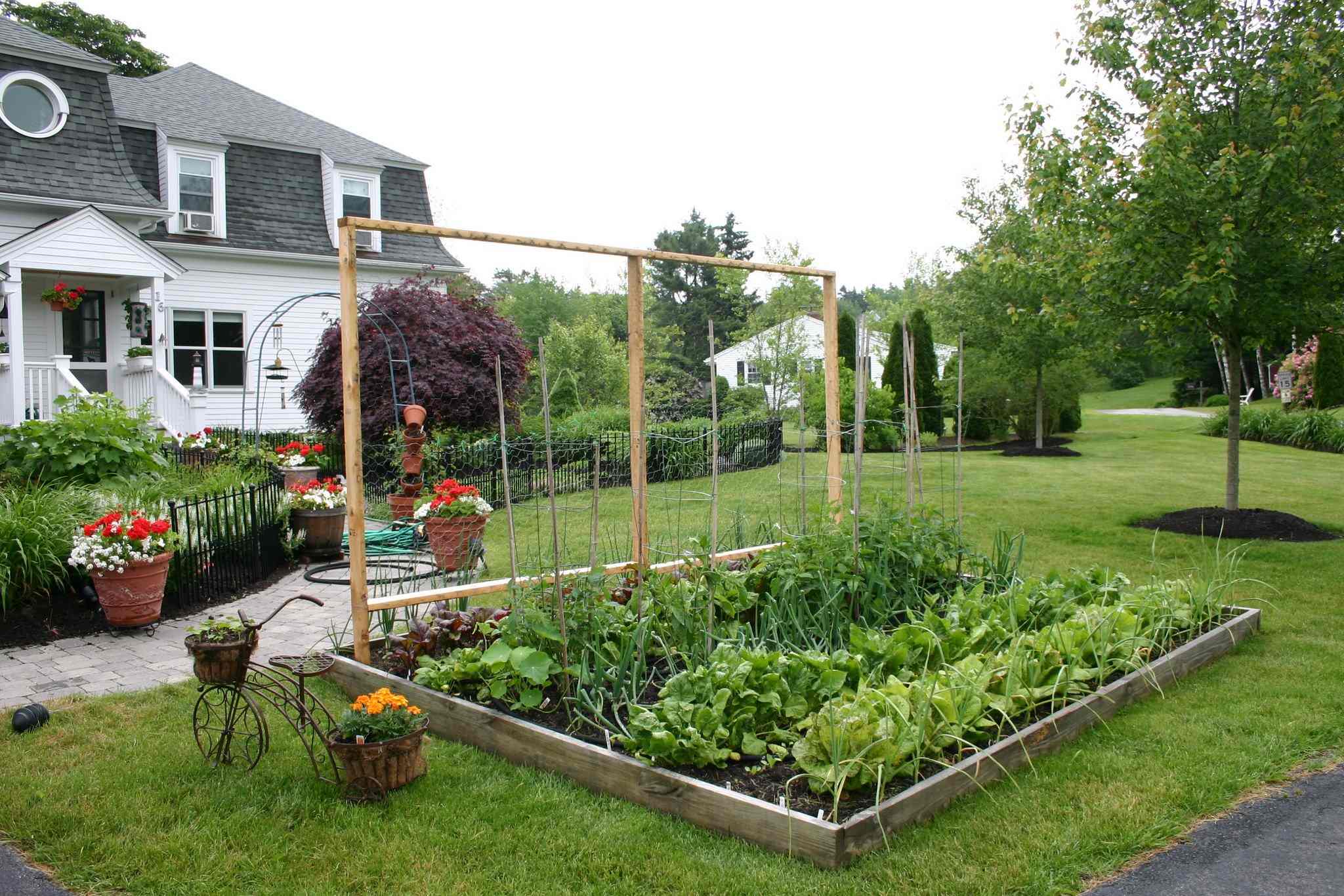Home>Gardening Techniques>Plant Care>When Do Trees Start To Bud
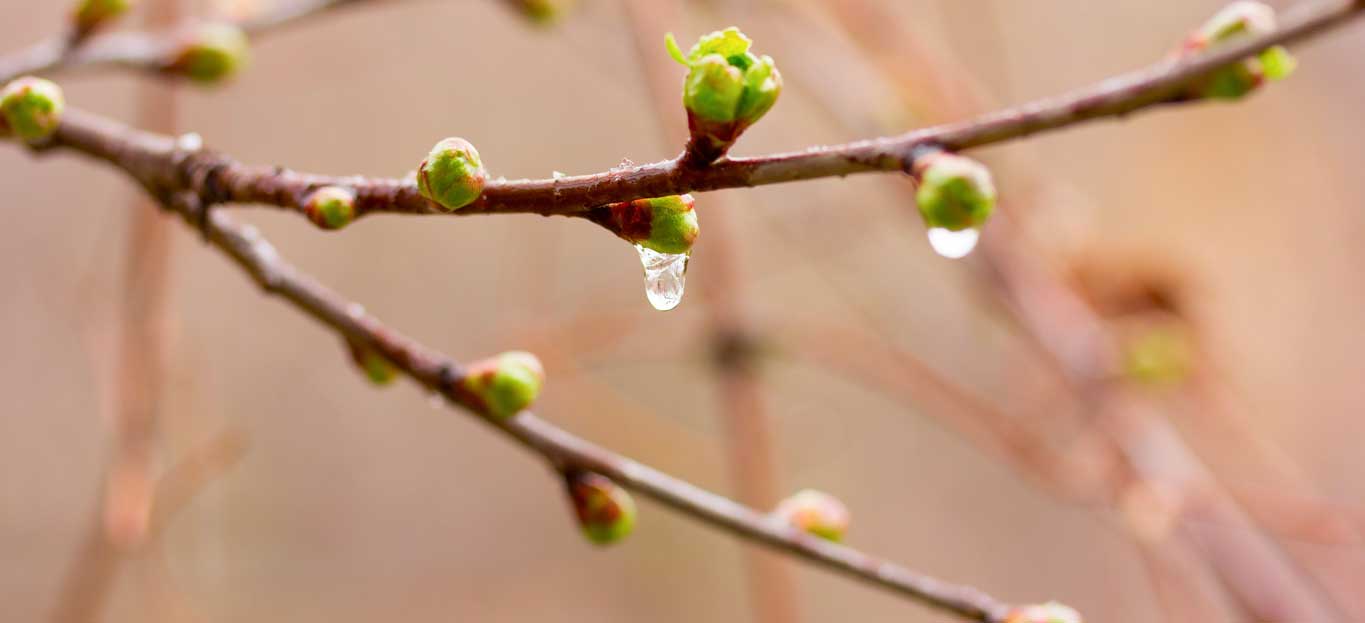

Plant Care
When Do Trees Start To Bud
Published: November 7, 2023
Discover when trees start to bud and learn essential plant care tips to ensure healthy growth and development. Enhance your gardening skills with expert advice.
(Many of the links in this article redirect to a specific reviewed product. Your purchase of these products through affiliate links helps to generate commission for Chicagolandgardening.com, at no extra cost. Learn more)
Table of Contents
Introduction
Welcome to the wonderful world of plant care! Whether you’re a seasoned gardener or just starting out, understanding the intricacies of bud development in trees is crucial for nurturing healthy and thriving plants. From the enchanting burst of blossoms in spring to the lush green foliage of summer, the journey of a tree’s bud break is a true marvel of nature.
In this article, we will explore the fascinating process of bud development in trees and discuss the various factors that influence when and how trees begin to bud. By gaining insights into these factors, you will be better equipped to provide the optimal growing conditions for your trees, leading to their overall well-being and longevity.
Bud break is an essential stage in a tree’s life cycle when dormant buds awaken and begin their growth. It marks the transition from winter dormancy to spring rejuvenation, ushering in a season of new growth, vitality, and beauty. Understanding the timing and triggers of bud break is essential for gardeners and arborists who aim to foster healthy tree growth and optimize crop yields.
Throughout this article, we will delve into the various environmental cues, such as temperature and photoperiod, that play a vital role in initiating bud break. We will also explore the significance of bud break in trees, including its impact on fruit production and overall tree health.
So, whether you’re an avid tree enthusiast, a curious gardener, or simply someone interested in learning more about the wonders of nature, join us as we unravel the mysteries of bud development in trees and embark on a journey of discovery.
Understanding the Bud Development Process in Trees
Before we dive into the factors that influence bud break in trees, let’s take a moment to understand the intricate process of bud development. Buds are tiny, undeveloped structures found on the branches and stems of trees that contain the potential to grow into leaves, shoots, flowers, or new branches.
The bud development process is divided into several stages, starting with bud formation. In late summer or early fall, the apical meristem, a group of cells at the tip of a tree’s branch, becomes dormant and prepares for the winter. Inside the protected bud scales, a fully formed leaf or flower primordium waits patiently for the right conditions to initiate growth.
As winter progresses, the bud continues to develop, with the inner cells undergoing physiological changes to protect themselves from freezing temperatures. This dormancy period, known as winter dormancy or quiescence, allows the tree to conserve energy and survive the cold winter months.
When the temperature rises, and spring arrives, the buds begin to swell and elongate, a process known as bud swelling. This occurs as the tree senses the changing environmental cues, signaling that it’s time to break dormancy and start growing again. The bud scales gradually loosen and separate, exposing the tender inner tissues to the outside world.
Once the buds have fully swollen, they reach a stage known as bud burst or bud break. This is the moment when the new growth emerges from the bud and becomes visible to the naked eye. Leaves unfurl, flowers bloom, and shoots elongate as the tree springs back to life. The timing of bud break varies among different tree species and is influenced by a combination of internal and external factors, which we will explore in the following sections.
Understanding the intricacies of the bud development process is crucial for tree care, as it helps us anticipate the timing of growth and provide the necessary support for healthy development. By observing and interpreting the stages of bud development, we can effectively nurture our trees and ensure their longevity and vigor.
Factors Affecting Bud Break
Bud break in trees is influenced by a variety of factors, both internal and external. Understanding these factors is key to predicting and managing the timing of bud break in different tree species. Let’s explore some of the major factors that play a role in this crucial stage of tree growth.
Temperature: Temperature is one of the primary factors that impact bud break. During the winter dormancy period, trees undergo a period of chilling, where exposure to cold temperatures triggers physiological changes in the buds. Once the accumulated chill hours reach a certain threshold specific to each tree species, it signals the end of dormancy, and bud break begins.
Photoperiod: The length of daylight also plays a significant role in bud break. Trees rely on the changing photoperiod as a cue for when to break dormancy and initiate growth. As the days lengthen in the spring, it provides trees with the signal that it’s time to start the growing season.
Dormancy: The length and intensity of dormancy have a direct impact on bud break timing. Some tree species have a deeper and longer dormancy period, requiring more accumulated chilling hours and extended exposure to low temperatures before they break dormancy. Others have a shorter dormancy period and may start budding earlier in the spring.
Environmental Cues: In addition to temperature and photoperiod, other environmental factors can influence bud break. Moisture levels, soil conditions, and the overall health and nutrition of the tree can all impact the timing and intensity of bud break. Adequate moisture and optimal soil conditions provide the necessary resources for trees to initiate growth.
Tree Age and Health: The age and overall health of a tree can also affect bud break. Young and vigorous trees tend to have a stronger growth response and may break bud earlier compared to older or weaker trees. Trees that have been injured or stressed may exhibit delayed or uneven bud break.
By considering these various factors, arborists and gardeners can make informed decisions about tree care and anticipate the timing of bud break. Providing the appropriate environmental conditions, such as proper watering, nutrient-rich soil, and protection from extreme weather events, can help optimize the bud break process and promote healthy tree growth.
Temperature and Bud Development
Temperature plays a critical role in the bud development process in trees. It influences the timing and rate of bud break, as well as the overall growth and development of the tree. Understanding how temperature affects bud development is essential for managing tree care effectively.
During the winter months, trees enter a period of dormancy as a survival mechanism to protect themselves from freezing temperatures. This dormancy period allows trees to conserve energy and ensures their survival during the harsh winter conditions. As spring approaches and temperatures begin to rise, the accumulated chilling hours experienced by the tree trigger the initiation of bud break.
Chilling is a process in which trees are exposed to cold temperatures, typically between 32°F (0°C) and 45°F (7°C). This chilling period is necessary for breaking the dormancy of buds. Each tree species has specific chilling requirements, often measured in chilling hours or chilling units. Chilling hours refer to the number of hours the tree is exposed to temperatures within the optimal chilling range.
Once the chilling requirements are met, the tree shifts from this dormant state to an active growth phase. Biological processes within the buds, such as cellular metabolism and enzyme activity, start to increase as the temperature rises. This metabolic activity leads to the swelling and elongation of the buds, ultimately resulting in bud break.
It is important to note that temperature fluctuations during the bud development period can have a significant impact. Rapid temperature swings or sudden freezes can harm the developing buds, leading to delayed or stunted growth. Frost damage can cause bud mortality or result in the formation of weak and deformed branches.
However, it is not only the spring temperature that affects bud development, but also the temperature conditions during the previous fall and winter seasons. If the chilling hours or the intensity of the cold temperatures were not sufficient, it may result in delayed bud break or uneven growth.
While temperature is a key factor in bud development, it is not the sole determinant of when bud break occurs. Other factors, such as photoperiod and environmental cues, also play significant roles in initiating bud break. The interaction of these factors determines the precise timing and extent of bud development in different tree species.
By carefully monitoring temperature patterns and considering other environmental factors, gardeners and arborists can assist tree development by providing appropriate care, such as protecting trees from extreme temperature fluctuations and ensuring they receive the necessary chilling hours to promote healthy and timely bud break.
Photoperiod and Bud Break
Photoperiod, or the length of daylight hours, plays a crucial role in regulating bud break in trees. It serves as a key environmental cue that signals when trees should transition from dormancy to active growth. The change in photoperiod that occurs as the seasons shift from winter to spring triggers the physiological processes that lead to bud break.
As winter progresses, the days gradually become longer, and the intensity of sunlight increases. This change in daylight duration and quality serves as a stimulus for trees to break their dormancy and enter into the growth phase. Longer days and higher light levels provide the necessary energy for photosynthesis and the production of carbohydrates needed for new growth.
For many tree species, the critical photoperiod length needed to initiate bud break varies. Some trees require a specific minimum daylight duration, known as the critical day length, to trigger bud break. Others respond to a combination of both light duration and quality, with certain wavelengths of light playing a role in signaling the tree to emerge from dormancy.
Additionally, the sensitivity of trees to photoperiod varies among species. Some species may respond quickly to changes in photoperiod, while others may have a delayed response. These variations in sensitivity and critical day length are adaptations that help trees optimize their growth and survival in different climates and regions.
It’s important to note that photoperiod is not the sole factor influencing bud break. Temperature and other environmental cues also play significant roles. However, photoperiod acts as a reliable indicator of seasonal change and helps synchronize bud break among individual trees and across species.
Understanding the relationship between photoperiod and bud break can assist in managing tree growth and development. By considering the photoperiod requirements of specific tree species, gardeners and arborists can strategically plan their tree care activities and anticipate the timing of bud break.
Modifying the photoperiod artificially, such as by providing additional light or controlling exposure to natural light sources, can also be used in certain situations to manipulate bud break. This technique is often employed in commercial fruit production to ensure synchronized and optimal flowering, leading to more successful pollination and fruit set.
By acknowledging the role of photoperiod in governing bud break, we can gain further insight into the complex web of factors that influence tree growth. This knowledge empowers us to make informed decisions and provide the necessary care for our trees, fostering their health, productivity, and beauty.
Dormancy and Bud Development
Dormancy is a critical phase in the bud development process of trees. It is a period of dormancy or quiescence when trees enter a state of rest, conserving energy and protecting themselves from harsh winter conditions. Dormancy allows trees to survive unfavorable weather conditions and resume growth when more favorable conditions arise.
During dormancy, trees undergo physiological changes that prepare them for the challenges of winter. As the days shorten and temperatures drop, trees acclimate by gradually becoming dormant. This process involves metabolic adjustments, such as a decrease in cell division and growth, and the accumulation of cold-hardy compounds within the buds.
Winter dormancy can be categorized into three main phases: paradormancy, endodormancy, and ecodormancy. Paradormancy refers to the suppression of buds by the apical dominance of the tree. Endodormancy occurs when the tree’s internal signals prevent the buds from growing. Ecodormancy is the external dormancy induced by environmental factors, such as cold temperatures, limiting growth and development.
Throughout dormancy, trees accumulate a specific number of chilling hours, which are cold temperature exposure hours within a specific temperature range. Chilling hours differ among tree species, with some requiring fewer hours and others needing more to break dormancy. These chilling hours are essential for overcoming internal bud structural changes and for the tree to properly transition from dormancy to active growth.
As winter transitions into spring and temperatures begin to rise, the chilling hour requirements are met, and dormancy is gradually broken. The physiological changes that occurred throughout dormancy enable the buds to respond to external stimuli and initiate growth. A combination of temperature-related processes and hormonal signals prompts the buds to swell, elongate, and eventually break open.
It’s important to note that while dormancy prevents active growth, it does not completely halt all metabolic activity within the tree. Some metabolic processes continue at a reduced rate, allowing the tree to carry out essential functions during dormancy, such as nutrient uptake and respiration.
The duration of dormancy can vary among tree species and even within individual trees depending on various factors, including genetic traits, environmental conditions, and cultural practices. Understanding the dormancy duration of specific tree species is crucial for managing tree care effectively and anticipating the timing of bud break.
By respecting and working with the natural dormancy process, gardeners and arborists can ensure the health and vitality of their trees. Providing proper tree care during dormancy, such as protecting them from extreme weather conditions and maintaining soil moisture, allows trees to successfully break dormancy and optimize their growth and development when the appropriate conditions arise in the spring.
Environmental Cues and Bud Break
In addition to temperature and photoperiod, a variety of environmental cues play a significant role in initiating bud break in trees. These cues provide important signals to trees, indicating when conditions are favorable for growth and the transition from dormancy to active growth should occur.
One of the key environmental cues is moisture availability. Adequate moisture in the soil is crucial for bud break and overall tree growth. Trees need an optimal level of water to support metabolic activities that stimulate bud development. Insufficient water availability can delay or inhibit bud break, while proper irrigation promotes healthy growth.
Soil conditions also play a role in bud break. Well-drained soils with good aeration promote root health and allow trees to access essential nutrients. A nutrient-rich soil with balanced fertility provides the necessary resources for the growth and development of the buds.
Moreover, certain tree species may have specific environmental requirements, such as exposure to a period of cold temperatures or specific soil pH levels. These species-specific cues must be considered when managing tree care and encouraging bud break for optimal growth.
Another important environmental cue is the presence of light. While photoperiod provides a overall indication of day length, the quality and intensity of light can significantly impact the timing of bud break. Trees respond to specific wavelengths of light, including red and blue light, which indicate favorable conditions for growth.
Environmental cues related to pests and diseases can also affect bud break. Trees that have been infested by insects or affected by diseases may experience delayed or abnormal bud development. It’s important to monitor and manage pest and disease issues to prevent disruptions in the bud break process and mitigate potential damage to the tree.
Additionally, cultural practices, such as pruning or fertilization, can inadvertently influence bud break. Pruning at the wrong time of year or excessive fertilization may disrupt the natural bud development process and lead to delayed or irregular bud break. Proper timing and technique in these practices help maintain the balance between stimulating healthy bud growth and preventing excessive stress.
By paying attention to these environmental cues and understanding their influence on bud break, gardeners and arborists can effectively manage tree care. Providing optimal growing conditions, including proper irrigation, soil health, and light exposure, allows trees to respond to these cues, resulting in timely and vigorous bud break.
Significance of Bud Break in Trees
The moment when trees begin to experience bud break is significant for both the tree itself and its surrounding ecosystem. The emergence of new buds and the subsequent growth and development that follows play a crucial role in the overall health and vitality of trees.
One of the primary significance of bud break is the initiation of the growing season. As the first signs of new growth appear, it signals the transition from winter dormancy to active growth. This period of renewed growth allows trees to take full advantage of the favorable conditions of spring and summer, maximizing their photosynthetic potential.
Bud break is particularly important for fruit-bearing trees. The development of flower buds and subsequent pollination during this time lead to fruit production. The timing of bud break is critical for synchronized flowering, ensuring successful pollination and yielding a bountiful harvest of fruits.
Bud break also marks the beginning of the leafing-out process. Young, fresh leaves provide the tree with increased surface area for photosynthesis, leading to the production of carbohydrates, essential for meeting the tree’s energy needs. The newly formed leaves contribute to the overall growth and development of the tree, enhancing its aesthetic appeal while playing a vital role in maintaining ecological balance.
In addition to its aesthetic and reproductive significance, bud break contributes significantly to the ecosystem. The emergence of new leaves provides shade, creating a cooler microclimate and reducing soil evaporation. The canopy formed by the expanding foliage offers habitat and nesting opportunities for various bird species, fostering biodiversity within the ecosystem.
Bud break is also an important indicator of the tree’s health. Delayed or uneven bud break can indicate underlying issues, such as nutrient deficiencies, pest infestations, or environmental stressors. Timely and uniform bud break is a positive sign that the tree is experiencing optimal growing conditions and suggests a healthy and resilient tree.
Furthermore, bud break in trees serves as a natural calendar, providing a visual cue for tracking the progression of seasons. It allows us to witness the marvels of nature, as dormant twigs and branches transform into vibrant and dynamic living organisms.
By understanding the significance of bud break, gardeners, arborists, and nature enthusiasts can better appreciate and care for trees. Providing proper tree care, such as adequate irrigation, soil nutrition, pest management, and protection from extreme weather events, helps ensure successful bud break and promotes the long-term health and sustainability of the tree.
Conclusion
The process of bud break in trees is a captivating and vital stage in their life cycle. Understanding the factors that influence bud development, such as temperature, photoperiod, dormancy, and environmental cues, allows us to nurture healthy and thriving trees.
Temperature serves as a key driver of bud break, with chilling hours playing a critical role in breaking dormancy. Photoperiod, the length of daylight, acts as a reliable environmental cue, signaling the transition from dormancy to active growth. Dormancy is a necessary period of rest and preparation for trees to withstand the winter months, while environmental cues, such as moisture availability and soil conditions, provide additional signals for bud development.
The significance of bud break in trees extends beyond their own growth and development. It impacts fruit production, contributes to the ecosystem through increased photosynthesis and habitat creation, and serves as an indicator of overall tree health. Bud break also provides a visual reminder of the ever-changing seasons and the beauty of nature.
By recognizing the importance of bud break and considering the various factors that influence it, we can make informed decisions in managing tree care. Providing optimal growing conditions, including proper irrigation, soil health, and protection from extreme weather events, allows us to support healthy bud break and promote the well-being of our trees.
So, whether you’re a gardener tending to a backyard tree or an arborist caring for a forest canopy, understanding the intricacies of bud break empowers you to cultivate thriving and resilient trees. As you witness the magical moment of bud break, remember the significance it holds in the grand tapestry of nature and the role you play in fostering the growth and beauty of trees.
